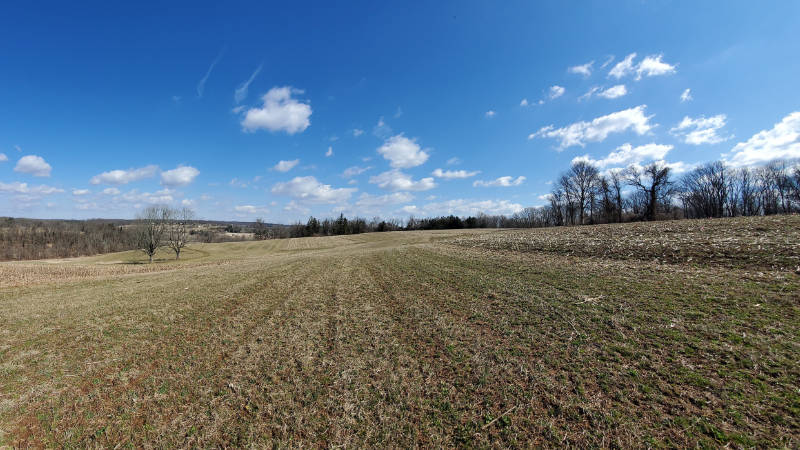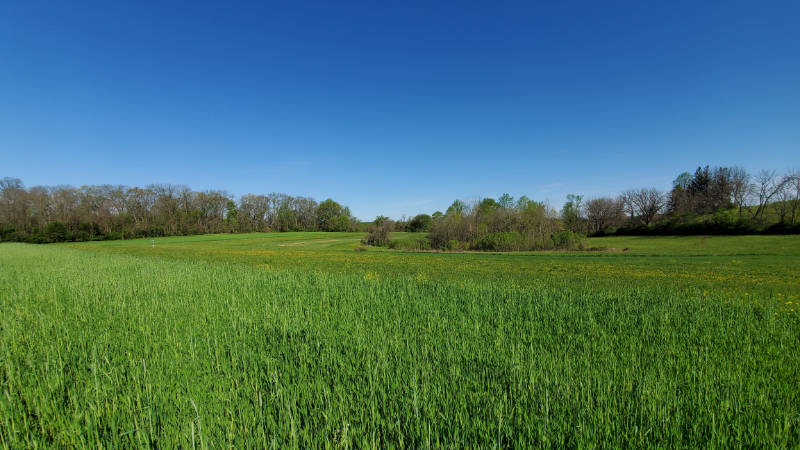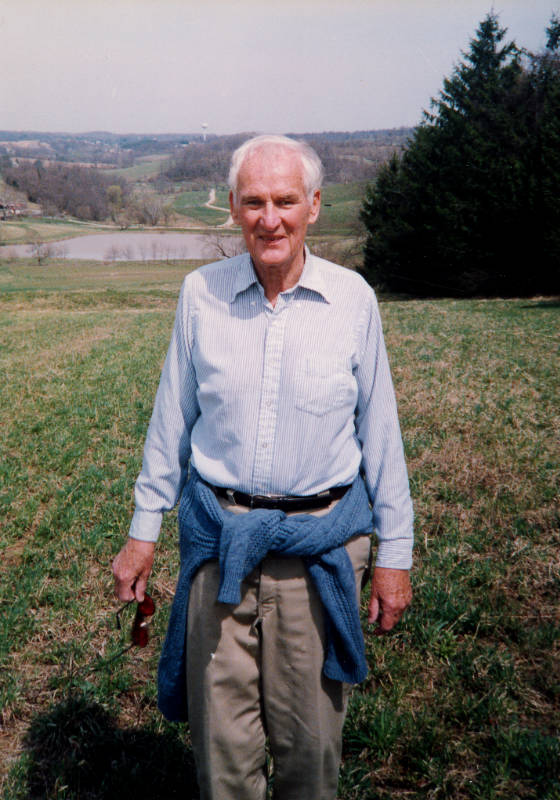Stroud Preserve
Stroud Preserve is managed by Natural Lands, a non-profit organization that saves open space, cares for nature, and connects people to the outdoors in eastern Pennsylvania and southern New Jersey. Visitor information is available on the Natural Lands website.
The following article originally appeared in Stroud Water Research Center’s Portrait: 1967–2000 publication. Some edits have been made to reflect current research.
Transversed by the East Branch of Brandywine Creek, characterized by upland meadows, woodlands, agricultural fields, and several small ponds and streams, and situated just 15 miles from Stroud Water Research Center, the 332-acre Stroud Preserve is a place of scenic beauty, historical interest, and economic value. To a visitor, it offers a variety of extraordinary vistas. To Stroud Center staff, it offers the rare opportunity to do long-term research on a site that has been preserved forever.
Formerly known as Georgia Farm, the Stroud Preserve was created by Dr. Morris W. Stroud shortly before his death in 1990. It is a unique collaboration among three of the region’s most important research and environmental organizations. Dr. Stroud, who was Stroud Center founder Dick Stroud’s elder brother and a pioneer in the study of geriatrics, bequeathed the ownership of his farm to the National Lands Trust (now Natural Lands), with instructions that the land and water be managed for the benefit of science, education, and the environment. He simultaneously donated conservation easements to the Brandywine Conservancy to assure the permanent integrity of the landscape. And he granted the Stroud Center perpetual use of the entire property to conduct scientific research and education programs. He charged the Stroud Center to develop a long-term research plan that would advance the knowledge, appreciation, and understanding of streams and rivers and the conservation of their watersheds.


Dr. Stroud then took the necessary steps to assure the success of this collaborative effort by providing endowment funds to all three organizations — to manage the land for research, inspect and defend the easements, and carry out the scientific and education programs. His novel gift to future generations came as no surprise to his family, friends, and colleagues, who remember his resolute belief in scientific research as the ultimate source of knowledge for the benefit of humanity. Today, his vision is reality.
The Stroud Preserve was part of the Environmental Protection Agency’s National Monitoring Program, a network of sites set up across the nation to evaluate how land use and human practices affect water quality. The long-term research project that led to the EPA designation focuses on the role riparian tree buffers play in mitigating stream pollution in an agricultural watershed. In conjunction with the U.S. Forest Service, Stroud Center scientists set up experiments in three small watersheds on the Stroud Preserve in an effort to understand how buffers filter agricultural nutrients — such as nitrogen, phosphorus, and other chemicals — which pose a major threat to downstream waters and the Chesapeake Bay. The study was part of a broader effort by Stroud Center scientists to analyze the impact of streamside forests on the quality of water in our streams and rivers.
Beginning in 2018, the Stroud Preserve was the location of a research project focused on improving farm productivity and profits while reducing water pollution associated with agricultural runoff.
Dr. Stroud’s Legacy

Why did Morris Stroud leave his farm as a research site and set up the Pennswood Endowment Fund to support scientific research and education at the Stroud Center?
Not a man who acted on impulse, Dr. Stroud thought long and hard about his decision. In the end, he told Bern Sweeney, he wanted to make a permanent contribution of the resources he had acquired during his life to a cause that would make a difference to the world he would leave behind. In pursuit of that goal, Dr. Stroud transformed a piece of his property into a laboratory dedicated to understanding how humans can use the land without imperiling its water. To support that effort, he sold stock he had received as a wedding gift 50 years earlier, and he used the proceeds to create an endowment. He said it was time to stop growing more money for its own sake and invest it instead in ideas and programs that will benefit future generations.
Dr. Stroud’s gift established his farm as a premier site for studying water resources in agricultural settings. It created an environmental education department that has helped thousands of students, teachers, and others understand, appreciate, and develop a sense of stewardship for streams and their watersheds. It has provided critical seed money, which has helped Stroud Center scientists turn interesting ideas into fundable projects. And it has ensured that the Stroud Center can pursue in perpetuity its mission of advancing knowledge and stewardship of freshwater systems through global research, education, and watershed restoration.
